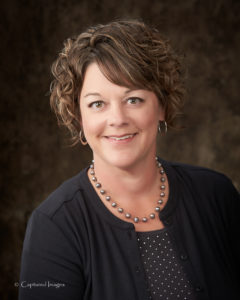
District Extension Agent, Horticulture
Southwind Extension District
111 S. Butler
Erie, KS 66733
Office: 620-244-3826
Cell: 620-496-8786
The popularity of container gardening has exploded. As we live in a world of limited time and space for gardens, container gardens seem to be a practical fit. Residents of apartments, long term care facilities or houses with small lots can still enjoy gardening. Poor soil or no place to put plants in the ground is no longer an excuse for not enjoying plants.
Building a container garden is really quite simple. However, they tend to need a bit more attention than a garden in the ground. Careful attention needs to be paid to the potting media, watering and fertilizing.
Garden soil is great for growing things in the ground but when using containers, the soil needs to be changed. Container soils need to be well aerated and well drained but yet still be able to retain moisture. This is why a soil substitute, or potting mix (media), is often used. These mixes may contain soil (called a soil mix) or no soil at all (called a soilless mix) and may also contain other ingredients such as peat moss, vermiculite, and perlite. You can also your own mix by using one part soil, one part peat moss and one part perlite. The same potting media can be used from year to year if the plants in the containers were healthy during the growing season with no major disease issues.
What about the contain itself? Containers come in many different styles and sizes. Containers can be made from clay, plastic, ceramic or wood. I have even seen used cattle supplement lick containers used and they actually work quite well. The only essential thing is that the container must have drain holes in the bottom.
As for the size of container, it depends on the type of plants to be planted. Small plants can be grown in fairly small, shallow containers while larger plants will need more space. Most annual flowers and small vegetables do best in 12 inch pots. Larger vegetables such as cucumbers, tomatoes or peppers will require a 16-24 inch container.
When choosing plants – most of the standard varieties of vegetables will grow well in containers. However, there are some cultivars bred specifically for small spaces. Lettuce, spinach, radish and onion are all early season vegetables that can be easily grown in containers. For the more warm season vegetables – sweet, hot and banana peppers do well in large containers. Tomatoes, dwarf varieties such as Patio, Pixie, Tiny Tim or Tumbling Tom, are a good choice. If you like a small vine tomato, consider Mountain Belle (cherry), Mountain Glory or Sunmaster.
We have a very useful publication titled “Growing Vegetables in Containers.” It gives complete information on planting, care, fertilization, and variety selection. Visit www.southwind.ksu.edu to download.
As we are just beginning of the growing season, I want to share my office rotation schedule in case you have questions that you would like to visit about in person: Monday, Wednesday and Friday – Erie office; Tuesday – Iola office; Thursday – Fort Scott office. However, I can always be reached by e-mail at kharding@ksu.edu or by calling 620-244-3826.
Krista Harding is a K-State Research and Extension agent assigned to Southwind District.
K-State Research and Extension is an equal opportunity provider and employer.
